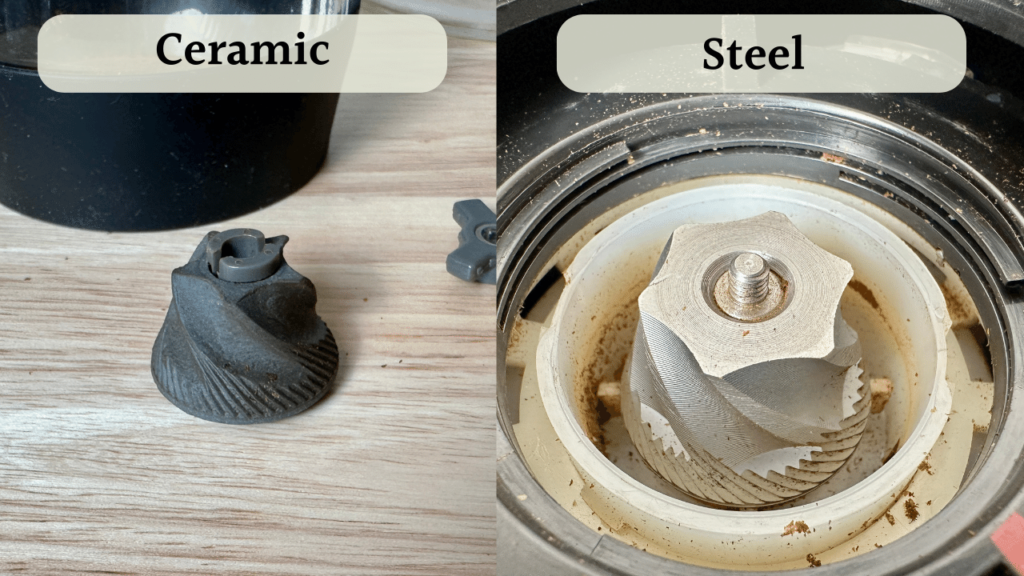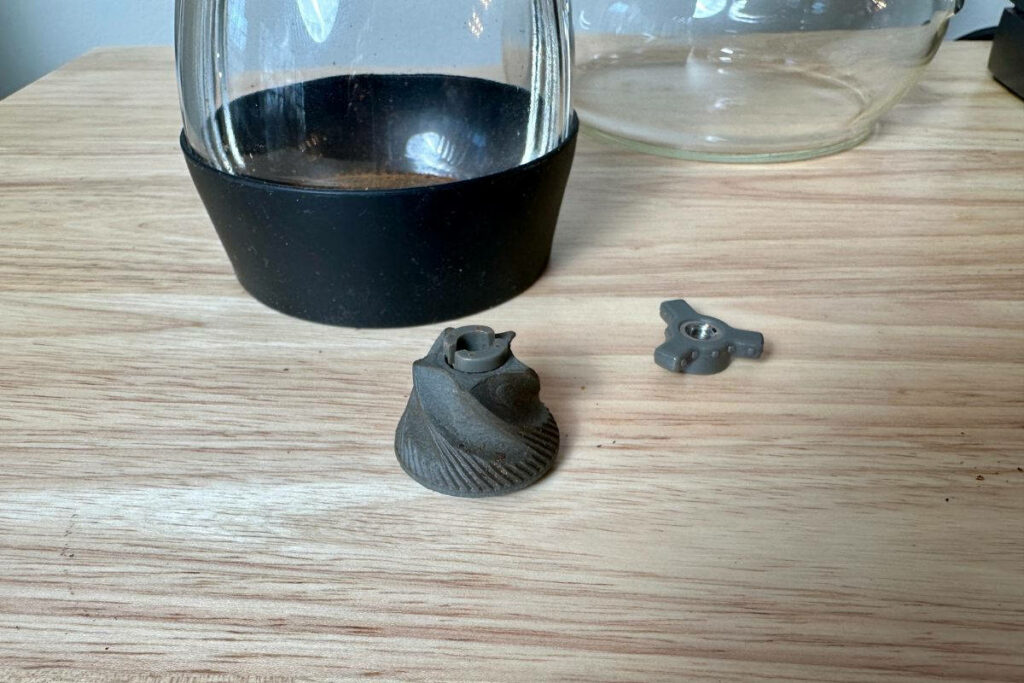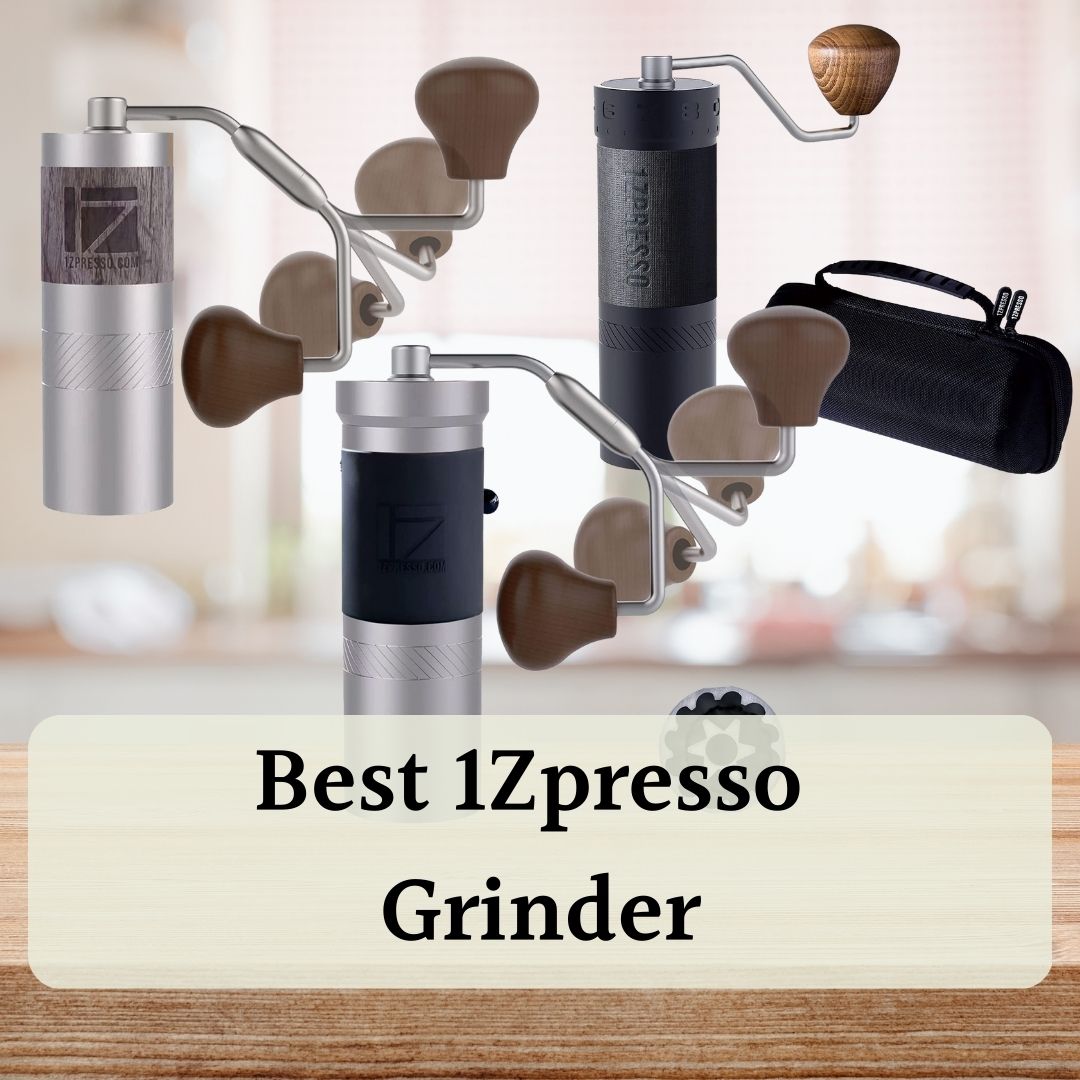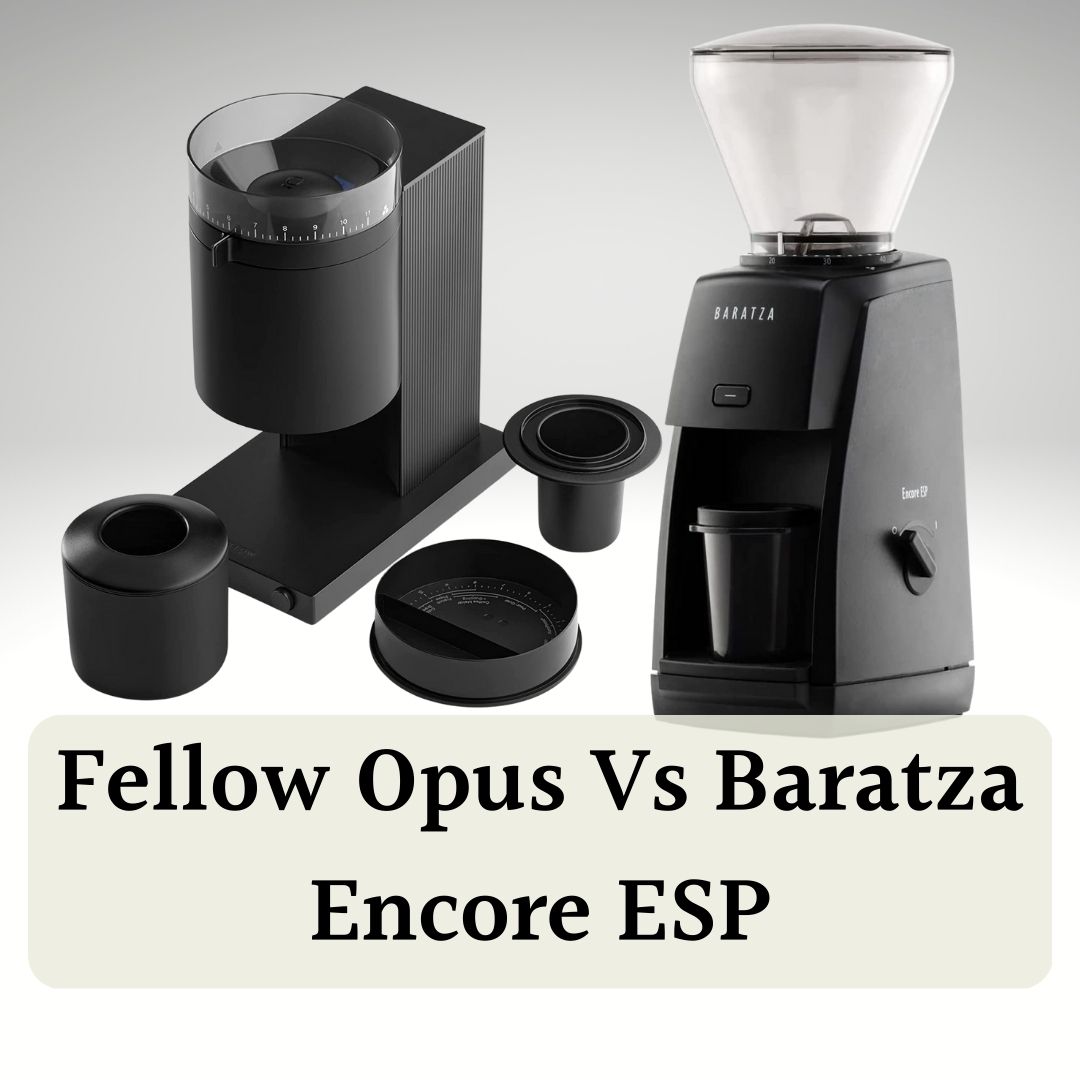If you want good coffee, grinding fresh beans is a must, which means a coffee grinder is the most important part of your coffee equipment. This also leads us to a big debate in the coffee grinder world: ceramic vs. steel burrs.
In short, neither material is clearly better. Generally, ceramic grinders retain their sharpness over time. However, stainless steel burr grinders are more durable and don’t get damaged as easily. Overall, there are more stainless steel burrs than ceramic ones, especially for home use.
Here’s everything you should know about a ceramic vs. steel burr grinder, so you can choose the best one for you.
How Much Does The Burr Material Matter?
Burr material will affect the heat transfer, durability, and grind consistency, which all matter when you’re making a choice for a long-term grinder. Most burrs are made from two types of material – steel, and ceramic – that I’ll focus on.

Ceramic burrs use a molded material. They are cooler than steel ones, which means they don’t heat up as much and don’t retain as much heat as a stainless steel burr grinder. You want as little heat as possible because heat burns the oils in beans, which negatively impacts flavor by “cooking” the beans during grinding. So, if we look at the heat aspect, the ceramic coffee grinder wins.
Ceramic burr grinders tend to retain their sharpness indefinitely, but they are less sharp than stainless steel coffee grinders, to begin with. The main con of ceramic grinders is that these coffee grinders are fragile. For example, if there’s a large rock hidden in the beans, it’ll damage the ceramic grinder.
The stainless steel grinder has metal burrs instead of ceramic. Metal is durable and more affordable than ceramic. For example, a rock in coffee beans won’t damage this grinder. Stainless steel grinders are common in commercial-grade grinders and premium home models because they usually have a more consistent and even grind.
So, which one is better: ceramic or steel burr grinder? There’s no definite answer, and it depends on many factors, including what kind of coffee you drink and your preferred flavor profile.
Note: Grinder quality depends on much more than burr material. Many factors, including burr design, motor quality, and grinder construction, play a role.
For example, a good coffee grinder is optimized to run at a speed that doesn’t cause too much heat, which is why it often pays to get a more expensive grinder (cheaper grinders tend to run hot).
I’ll do my best to separate factors strictly by grind material, but keep in mind burr material is only one factor in a grinder.
Deep Dive Into Ceramic Burr Grinders
Ceramic burrs are made with earth materials, like clay, that are molded with the teeth to crush coffee beans between them.

Ceramic blades are high-strength and long-lasting. They are less sharp than stainless steel at first. However, they retain the original sharpness forever. They don’t rust and can withstand warm environments and moisture. Also, ceramic grinders don’t conduct heat, so you don’t have to worry temperature will affect coffee oils.
Their main con is ceramic is brittle and doesn’t withstand larger impacts. Think of a ceramic pot that can chip more easily than a steel pot; that’s similar to ceramic burrs. You have to be careful not to put anything strange in the grinder and check the beans for small rocks.
Flavor Profile
Ceramic blade grinders are known for producing a “traditional” coffee taste. Coffee beans ground using a ceramic burr grinder have a distinct mouthfeel and more body compared to stainless steel burr grinders.
It’s been said that ceramic grinders are better for espresso. However, this is unclear. After all, most premium espresso grinders (like Eureka, Niche, and Turin) use some variation of steel burrs, not ceramic. But, those grinders also focus heavily on uniform grind size and low retention, whereas stainless steel excels. Meanwhile, a ceramic grinder can produce a more bimodal distribution of fines and boulders, which can enhance the complexity of espresso.
Best Use Cases
Ceramic burr grinders are best used for manual grinding because it ensures the blades don’t get damaged.
The main difference between a hand grinder and a burr grinder is whether or not the grinder uses electricity. Hand grinders are best with ceramic blades because this kind of grinding protects the blades in the long run.
Deep Dive Into Steel Burr Grinders
Stainless steel grinders have chromium, which means they are corrosion-proof. They won’t retain any of the coffee oils or rust. However, they conduct more heat when grinding, which can burn off oils in the coffee beans and negatively impact the quality of your brew. They are also more affected by hot environments, which means they’ll have a shorter lifespan compared to ceramic ones.
Stainless steel grinder loses its sharpness faster than ceramic burrs. However, this is a bigger issue in a commercial setting where they are used heavily over a long time, and it’s not a big issue in-home use. Stainless steel coffee grinders start out significantly sharper than ceramic, which means better-grinding precision and better grind uniformity.

These grinders are extremely strong and hard-wearing, and you don’t have to fear they’ll crack if a foreign substance ends up in the grinder.
Their burr mechanism is machined and tends to produce a more even grind compared to ceramic burrs.
Flavor Profile
A stainless steel coffee grinder produces a cup that tastes cleaner compared to ceramic burrs because there are fewer fines in the coffee. Steel burrs are extremely precise, so you’ll get coffee that’s brewed exactly how you like it, regardless of the brewing method.
Overall, steel burrs produce clean-tasting coffee and work better with single-origin coffee because of the uniformity. If you grind espresso beans with steel burrs, you’ll notice it tastes different because it’ll have a lot of small grind particles or lack fines.
Best Use Cases
Steel burrs are best used for coarser grinds, such as pour-over, French Press, drip brews, and modern-style espresso, as they produce fewer fines and have an even particle distribution.
Comparison of Ceramic vs. Steel Burr Grinders
Ceramic vs. Steel Coffee Grinder Similarities
The main similarity between ceramic and steel blade grinders is that a good burr of either type will yield similar results. They can provide consistent coffee grounds and will last for years. Their shape and design are very similar.
Ceramic vs. Steel Coffee Grinder Differences
| Ceramic | Stainless steel | |
|---|---|---|
| Blades | Start duller but holds sharpness longer | Start sharper but dulls over time |
| Longevity | Fragile | Extremely sturdy and durable |
| Heat | Doesn’t produce heat | Produces heat |
| Grind | Less even | More uniform |
| Taste | Full-bodied mouthfeel | Cleaner mouthfeel |
| Price | More expensive | More affordable |
| Maintenance | Low maintenance and easy to clean | High maintenance and should be cleaned after every use |
Factors to Consider When Choosing
Here’s what to keep in mind when choosing the best coffee grinder for you.
Price
A quality ceramic burr grinder tends to cost more up-front. However, it doesn’t need to be replaced often, which means there’s a lower recurring cost, and you can end up saving money over time.
A stainless steel coffee grinder costs less up-front, but its blades will warp and turn blunt over time and with heavy use. This means the first stainless steel grinder won’t be your last one.
Overall, there’s not a huge difference between steel and ceramic grinders, and the difference in price depends if this is a manual or an electric coffee grinder.
Manual or Electric
A steel blade grinder is better for an electric grinder, while a ceramic is better for a manual grinder. Electric grinders spin much faster and the sharper edges will deliver more consistent grinds at high speed. However, both materials will function well in each setting, so it’s down to how much convenience you want.
If you want to control every step of the coffee-making process, and don’t want a noisy grinder first thing in the morning, go for a manual grinder. But, if you just want to throw your beans in, press a button, and get coffee ground, go for an electric stainless steel one.
What About SSP Burrs?
SSP burrs are getting discussed more often for their ultra-high quality and grind consistency. SSP is a family-owned South Korean company that’s been manufacturing milling tools since 1991 (the name comes from the family initials). They use customized software for their burrs made in Switzerland and material coating made in Germany, so you get a global collection of grinding tools that’ll last a long time.
Their burr grinders are made of coated tool steel material which increases their longevity. The grinders can last up to 10,000 lbs of coffee and can withstand bulk grinding.
Note: The company only sells the burrs, not entire grinders with casing. This is a good choice if you have blunt burrs and want to replace them with new ones. Retailers often offer the option to upgrade to SSP burrs when buying a grinder.
Overall, these grinders have a reputation as the ultimate end-game grinders. They have sharp cutting angles that chop through each bean. They grind smoothly, which minimizes heat transfer and maintains coffee aromas. Personally, I have yet to use SSP burrs (I’ve stuck with stock burrs due to cost), but SSP gets high marks almost everywhere I look.
Should You Choose a Ceramic or Steel Burr Grinder?
Overall, you won’t go wrong with ceramic or steel grinders. A ceramic coffee grinder is more expensive, last longer, and is best suited for making espresso. Steel grinders are more durable, sharper, and better suited for coffees that require a coarser grind.
Another important coffee grinder debate is the conical vs. burr grinder. We summed up everything there’s to know about them, so check out our rundown.




